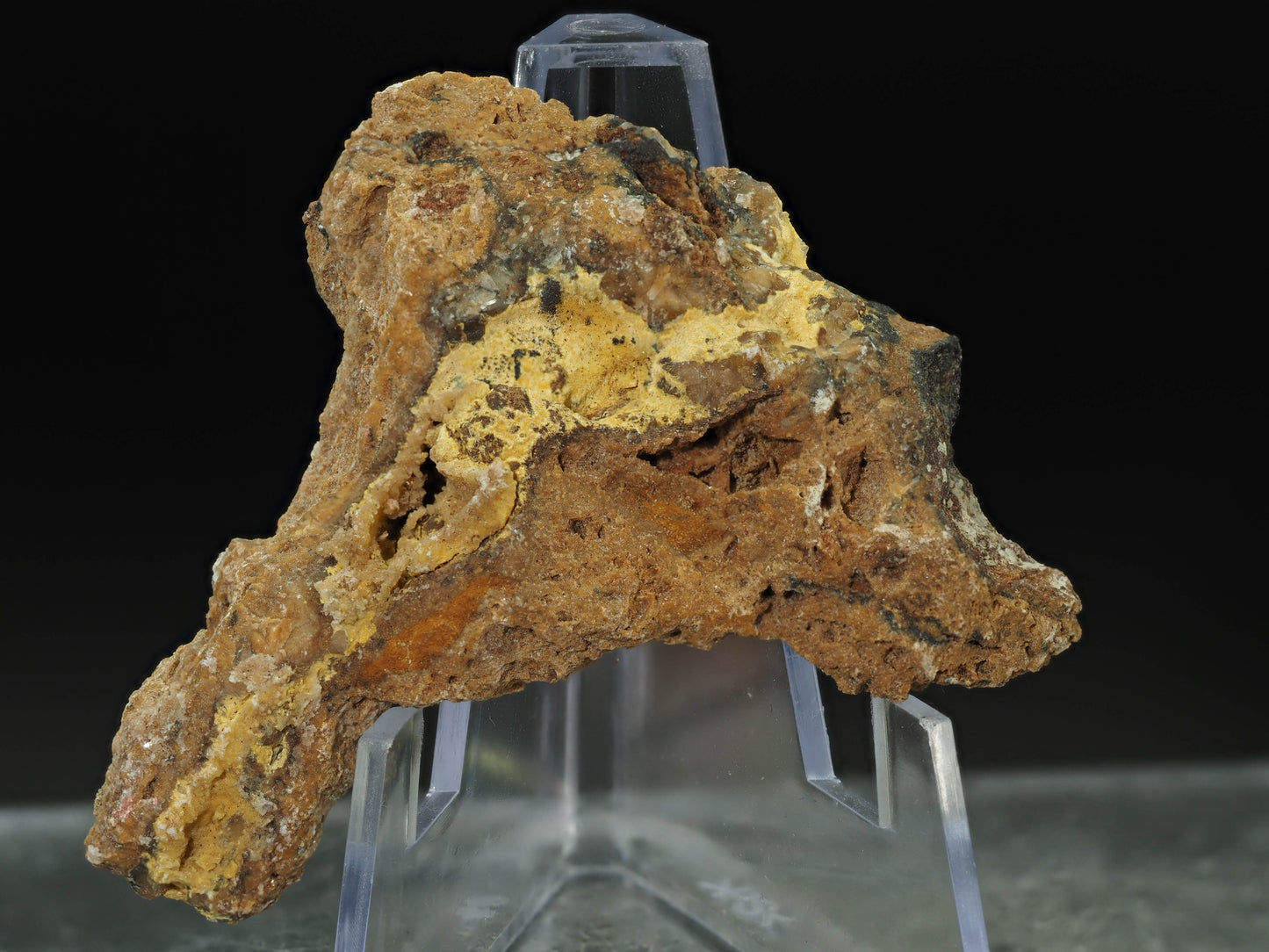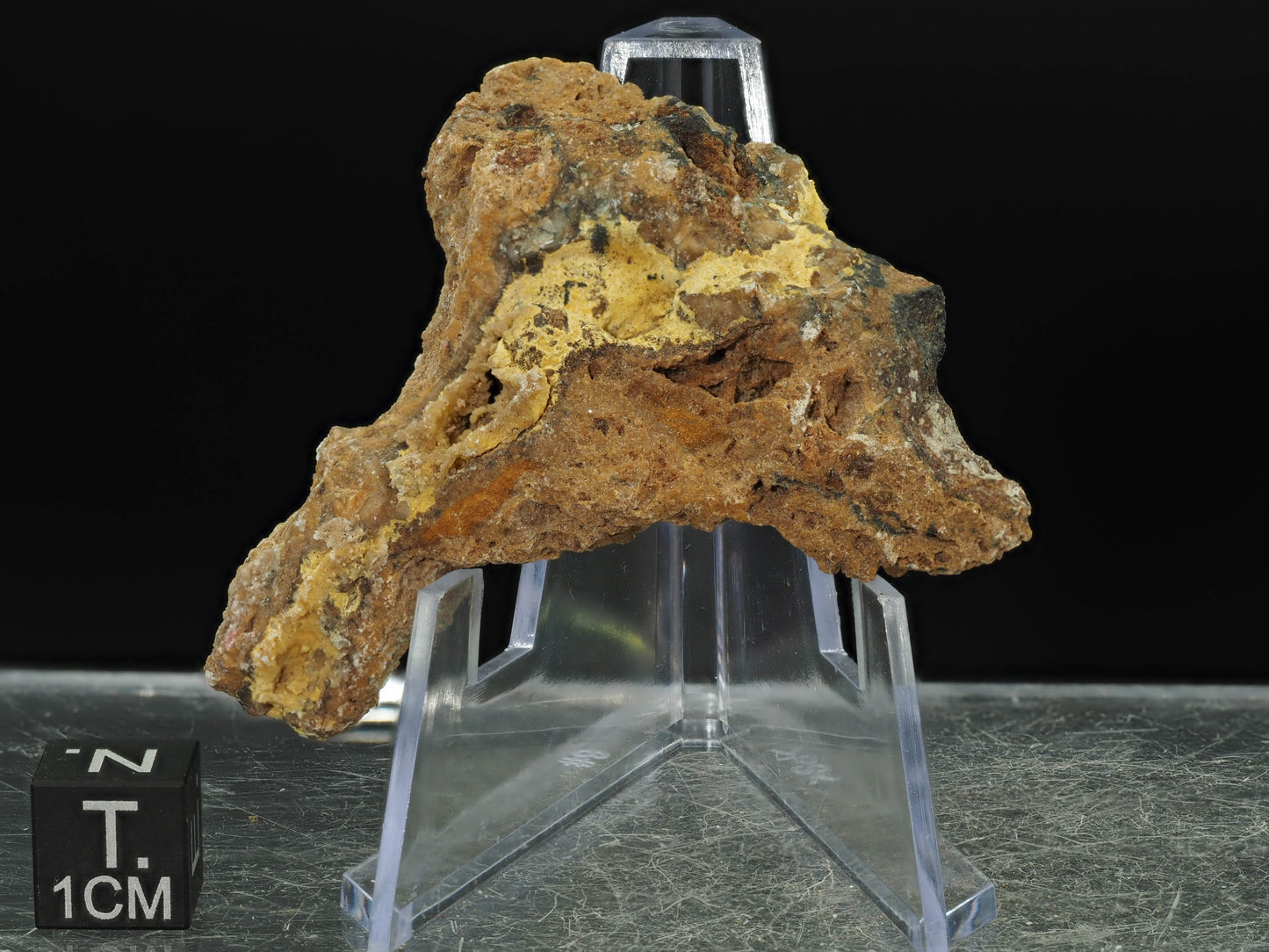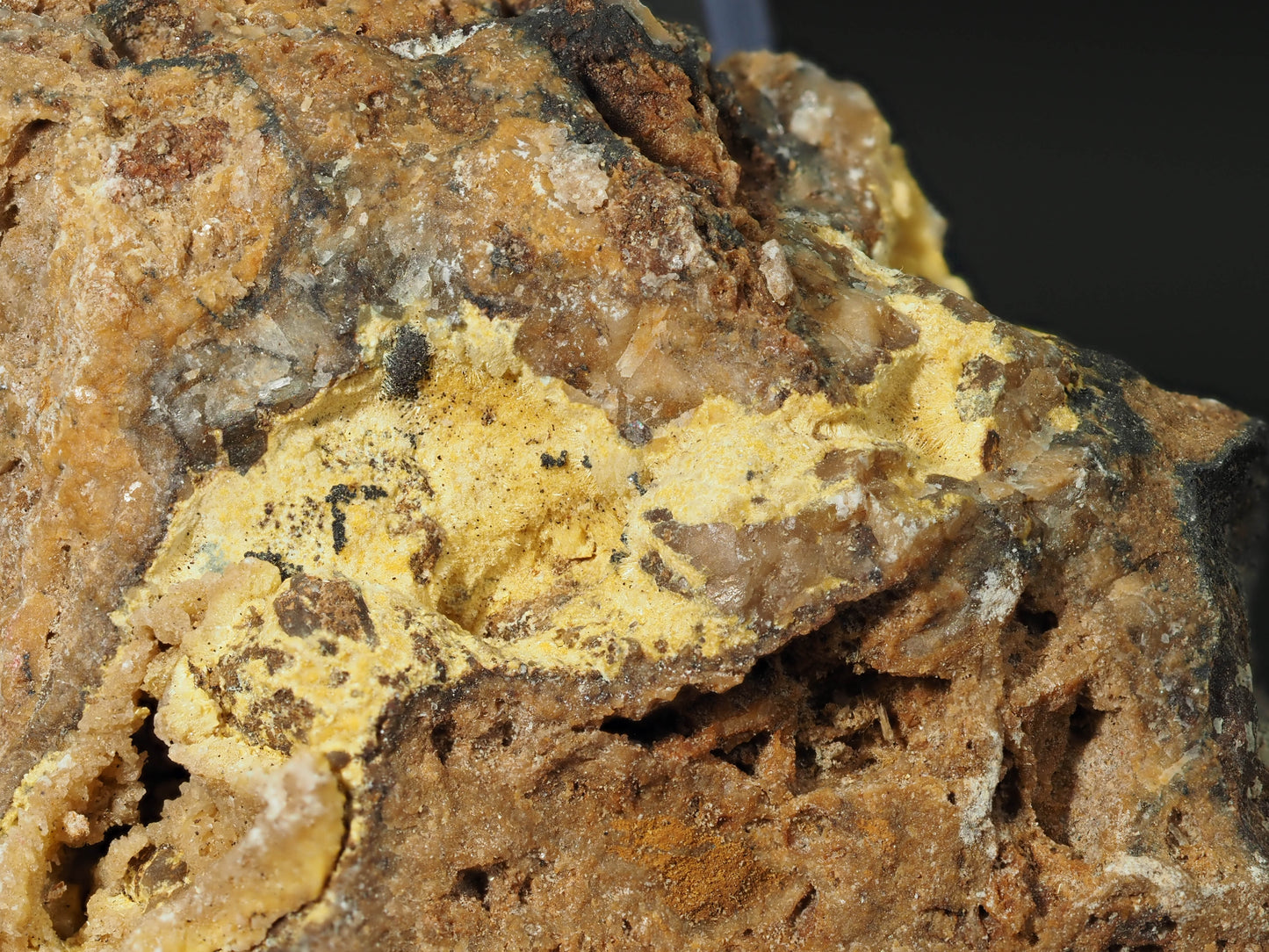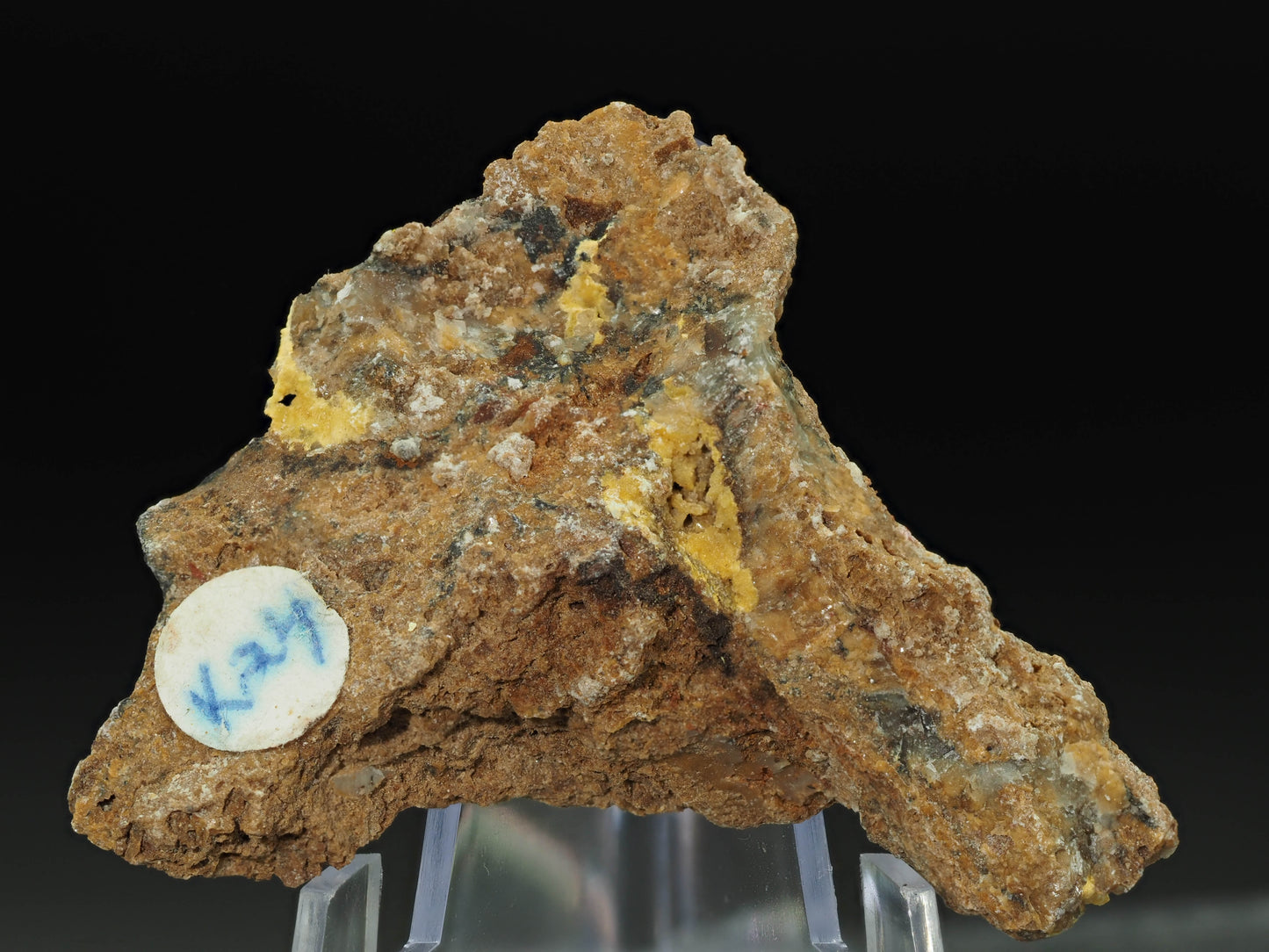Rad Man Minerals
Weeksite - Rössing Uranium Mine, Namibia
Weeksite - Rössing Uranium Mine, Namibia
Couldn't load pickup availability
Weeksite from the Rössing Uranium Mine in Namibia is a rare potassium uranyl silicate mineral that forms in the oxidized zones of uranium deposits. At Rössing, weeksite typically appears as vibrant yellow to golden-yellow crystalline crusts or microaggregates, often coating fracture surfaces in granitic or albitized host rock. Its color and association with other secondary uranium minerals make it a visually striking and highly fluorescent specimen under UV light. Due to its potassium and uranium content, it is mildly radioactive and must be handled accordingly.
This weeksite specimen is notable not only for its rich, bright color but also for its geological context within one of the world’s largest open-pit uranium mines. The Rössing deposit is a massive, low-grade uranium orebody in Proterozoic granite, and the secondary mineralization provides insight into the oxidation and weathering processes of uranium-rich systems. Such specimens are prized by collectors for their rarity, aesthetic quality, and connection to a historically significant uranium source.
Approx. specimen size: 55mm x 50mm x 15mm
Approx. specimen weight: 24.88 grams
Approx. specimen activity on an SE International Ranger EXP: 24270 cpm








